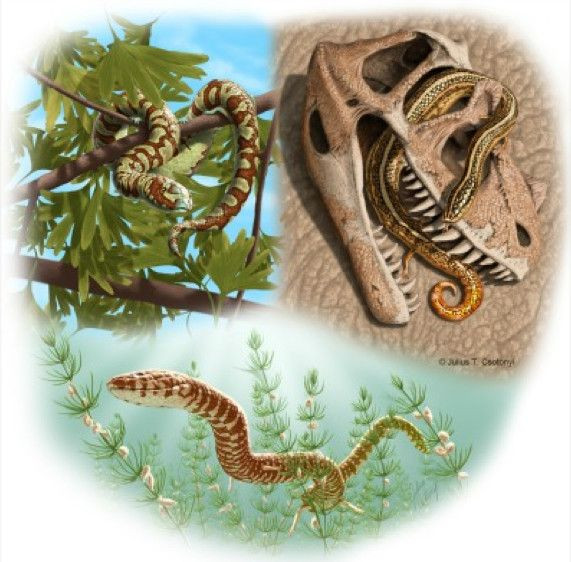World’s Oldest Snake Fossils Are Resetting The Evolutionary Clock By About 70 Million Years

New fossil evidence has revealed that snakes’ roots go back much further than anyone may have grasped. Four recently identified snake fossils from between 140 and 167 million years ago showed that snakes, which share common ancestors with modern lizards, were around almost 70 million years earlier than previously thought and lived alongside Jurassic dinosaurs, according to a new study published Tuesday in the journal Nature Communications.
What struck researchers was that all four ancient snakes had the characteristic long, thin skulls of their modern successors, meaning snakes may have evolved their distinctive snouts before losing their limbs. “The study explores the idea that evolution within the group called 'snakes' is much more complex," Michael Caldwell of the University of Alberta in Canada and lead author of the study said in a statement. “The paper explores the novel idea that the evolution of the characteristic snake skull and its parts appeared long before snakes lost their legs.” Prior to the new discovery, the oldest known snake fossil was dated to around 100 million years ago, suggesting that the carnivorous reptiles emerged suddenly and evolved quickly.
The oldest of the four fossils, all of which were recovered from forgotten museum collections, was a 167-million-year-old fossil found in a quarry near Oxford, England. The ancient remains were mistakenly labeled “lizard” and belonged to a reptile called Eophis underwoodi. It measured about 10 inches (25.4 centimeters) in length and was a swamp dweller that probably preyed on small insects, tadpoles and minnows, researchers noted.
The largest of the four snake fossils was found in western Portugal. The ancient reptile, dubbed Portugalophis lignites, measured more than 3 feet in length and had a similar diet to Eophis, the study authors noted. Researchers believe the snakes may have still had forelimbs and hind limbs, even if they were only used for grasping, but they couldn’t be sure as the fossils were incomplete, according to Reuters.
Having shared closed quarters with dinosaurs, ancient snakes likely “ate young dinosaurs or preyed upon their eggs,” Caldwell told Discovery News. "A very good example comes from the Late Cretaceous of India, where a well-preserved snake was found in a sauropod dinosaur nest with embryos of the dinosaur still in the egg," he said.
It is widely believed that snakes evolved from either a land-burrowing lizard or one that swam in the sea, according to a 2011 study in the Journal of Vertebrate Paleontology. Millions of years ago, snakes’ legs began to grow stubbier with time until they eventually vanished. Researchers believe the limbs would have hindered snakes’ movement and eventually became useless.
The discovery of four snake fossils dating back to the Jurassic has posed one problem -- the geological timeline now has a giant chunk missing. “There is now a significant knowledge gap to be bridged by future research as no fossils snakes are known from between 140 to 100 million years ago,” Caldwell said.
© Copyright IBTimes 2024. All rights reserved.






















